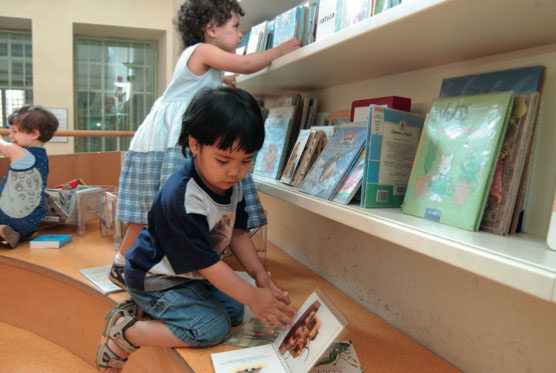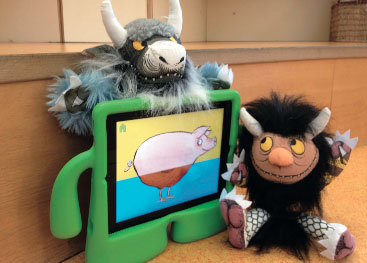A sunny day in Neptune Square.
I am with Nicoletta Gramantieri, a librarian and the head of the Salaborsa Ragazzi Library in Bologna. She tells me about the importance of the library for our city. She makes me see how the Partisan Shrine is always the object of scrutiny and attention. “Every day I get to see, just outside the library door, parents pointing out to their little ones the pictures of the War Memorial of the Fallen in the Resistance and I listen to them narrating, contextualizing, being moved.”

A few words to understand the importance of having as the centre of gravity of the city a library that is first a place where generations meet and read together not only the books but also the spaces that safeguard it. A few words to understand how Salaborsa Ragazzi places itself at the centre of the city’s life, creating opportunities to make form, function, and meaning of things comprehensible to the youngest citizens and not only to them. Paying attention to things, watching their movements, listening to their sounds, taking others seriously, is what it takes to understand the world as it happens, as events make history.

These are the qualities of someone who does not consider knowledge to be the fruit of merely perusing through the books she keeps, but as the result of a daily practice deeply rooted in the real world she observes and to which she belongs. “You stand best when your roots are long and your foundation is solid. Thus, the work of the hours, the one that builds collections, activities, opportunities, projects, is nourished by the responsibility and the awareness of being temporary custodians of a significant place in terms of belonging to the city, of democracy and civic-mindedness. A place that, by promoting access to culture for girls, boys and their families, continues and substantiates the values of democracy, equity and belonging.” If the path is created by walking, it is a path that is oriented using the library as a map. “It is not a static, pre-established map, it is drawn upon the relationships, the threads, the plots that day by day are created, stretched, woven.”

.jpg)



.png)